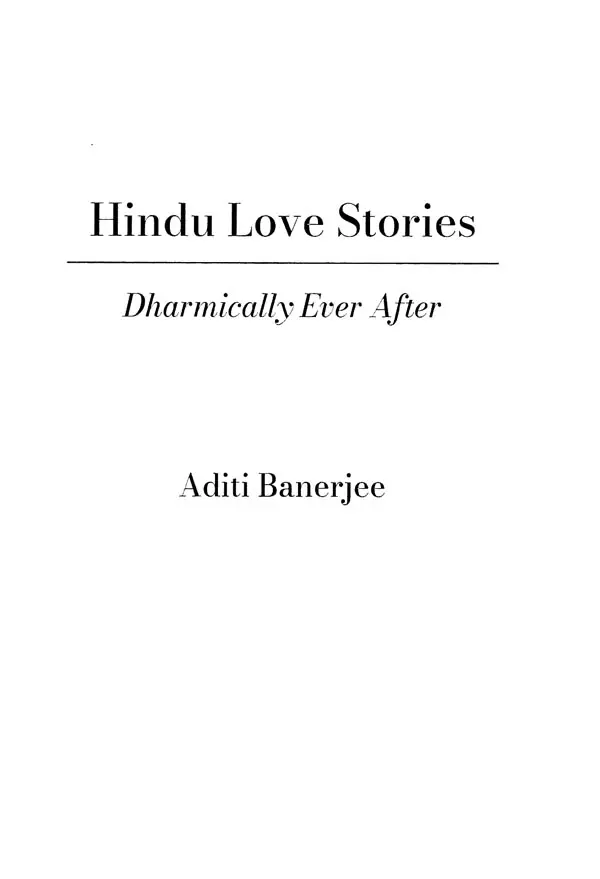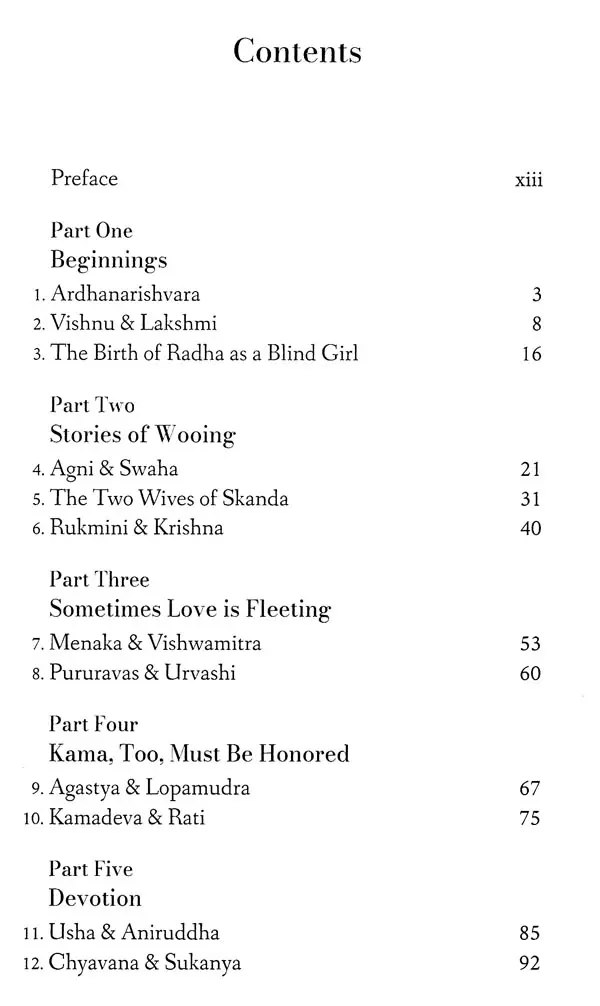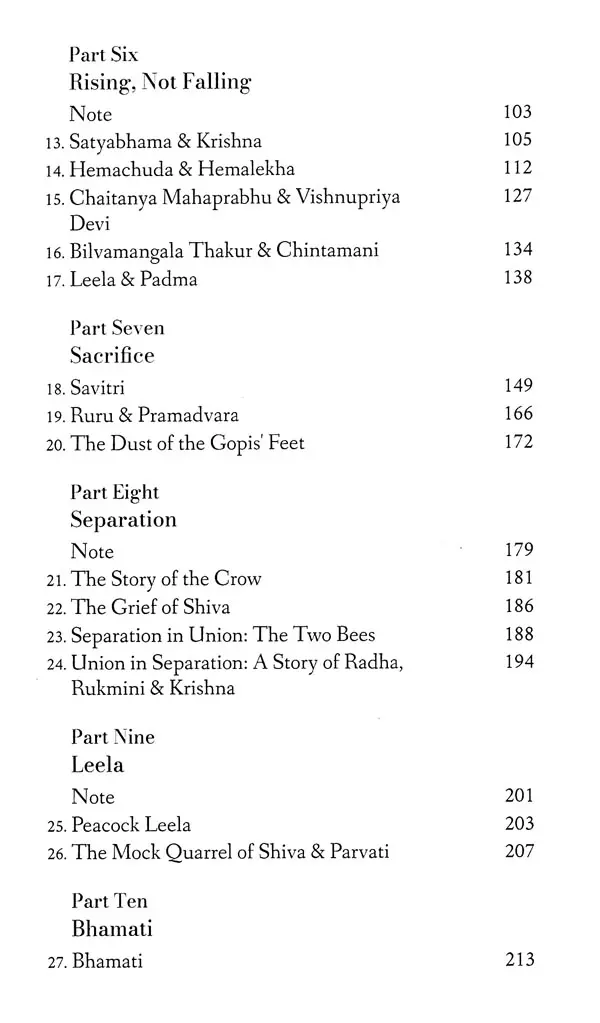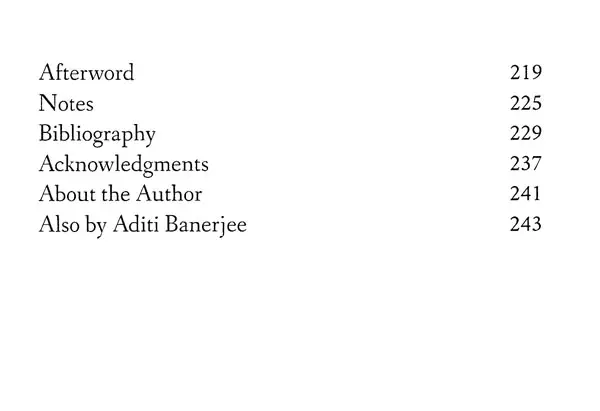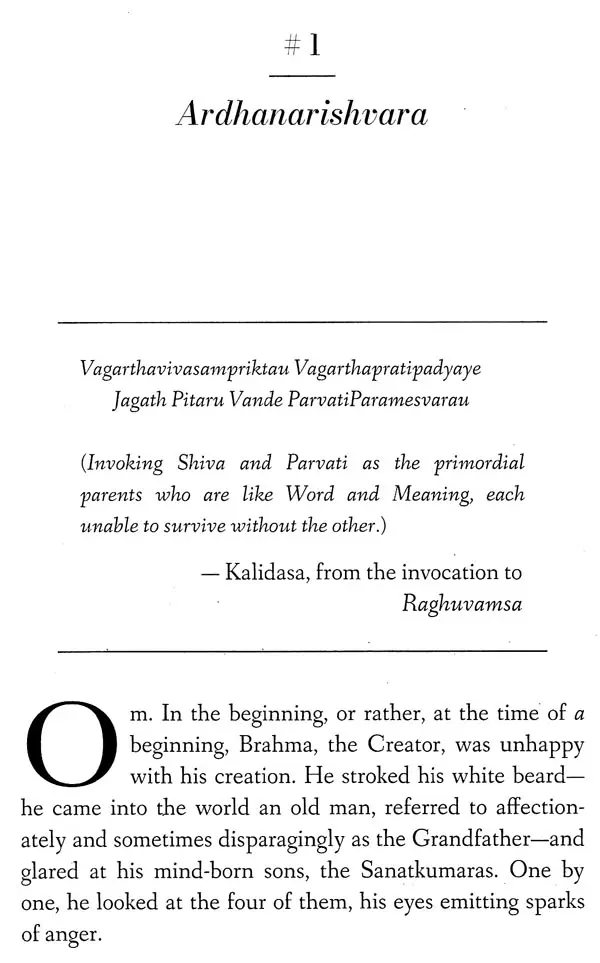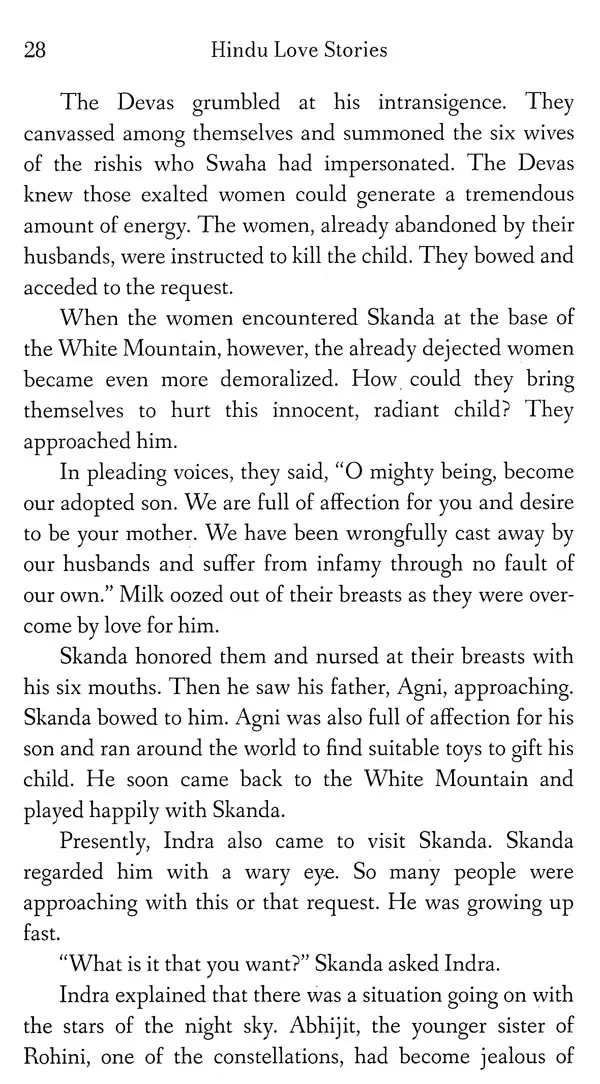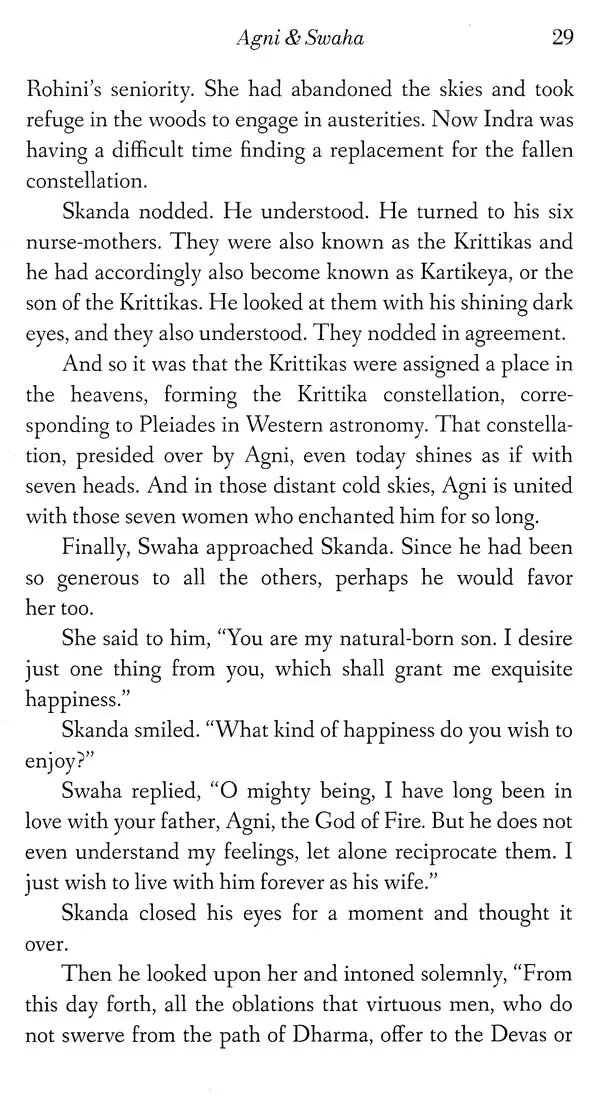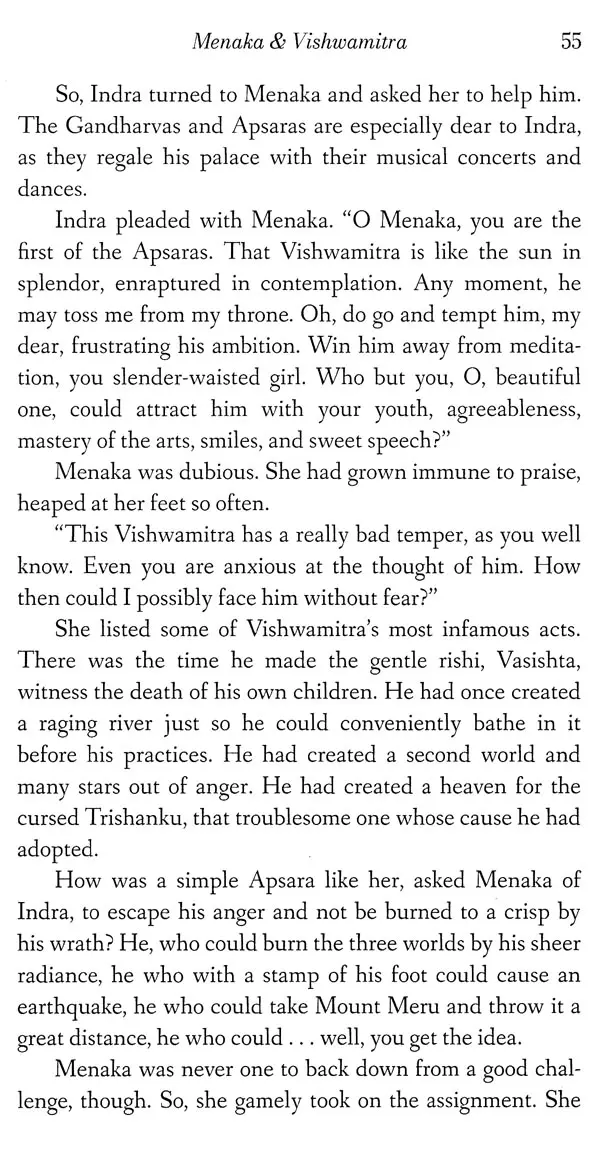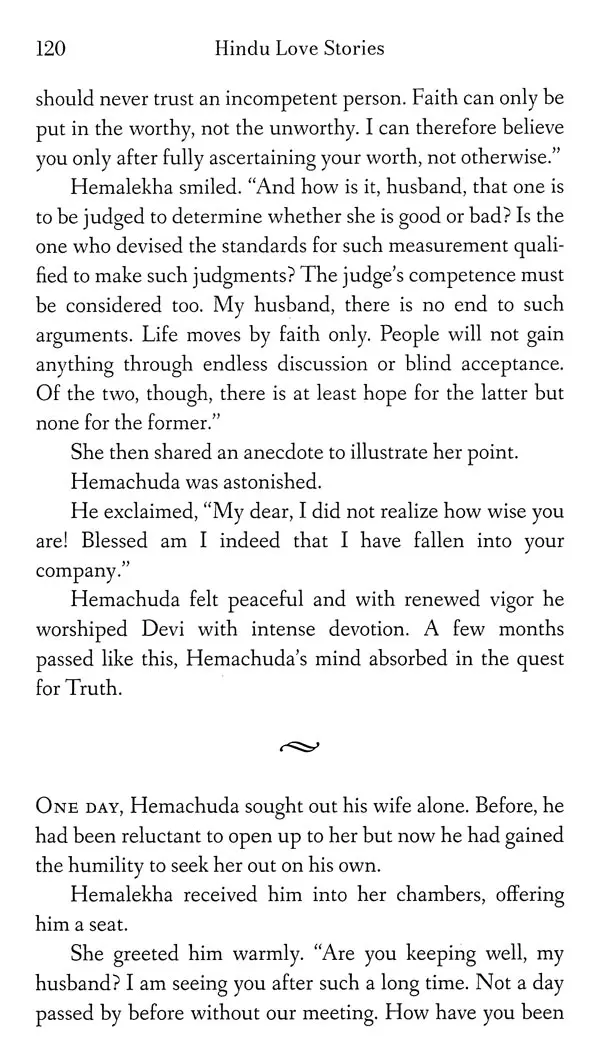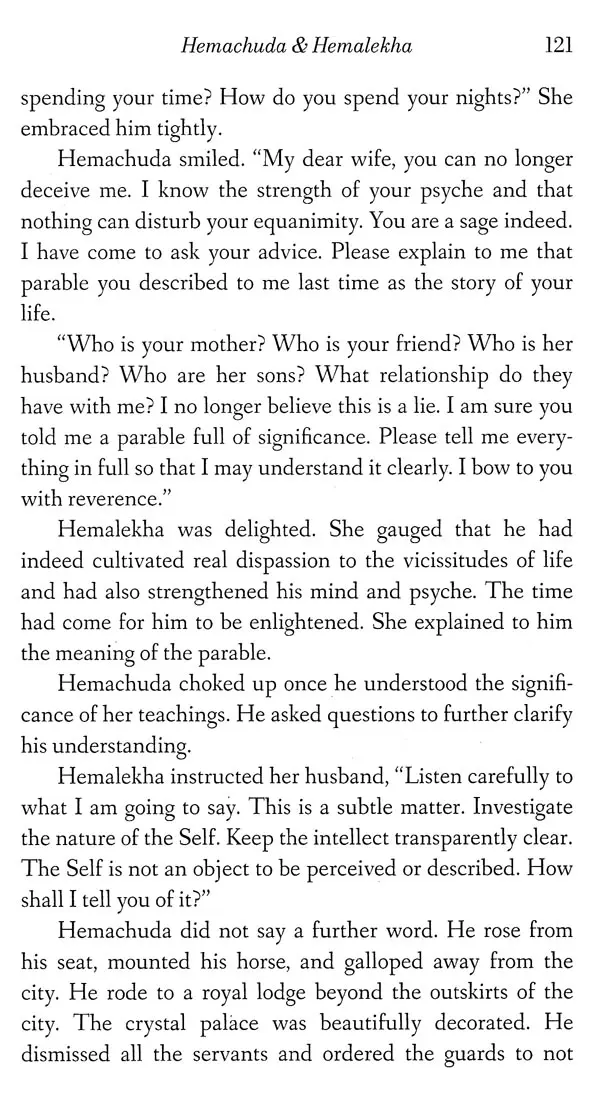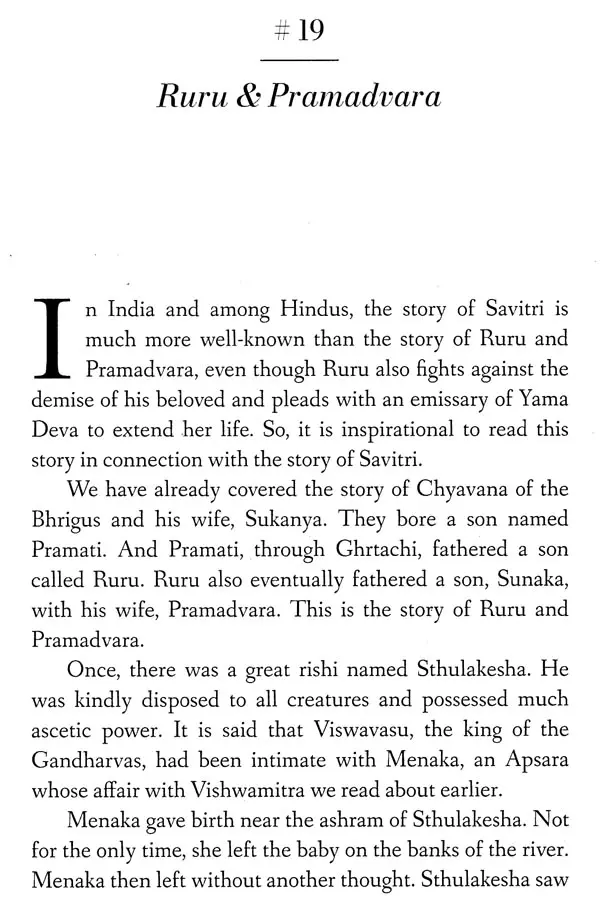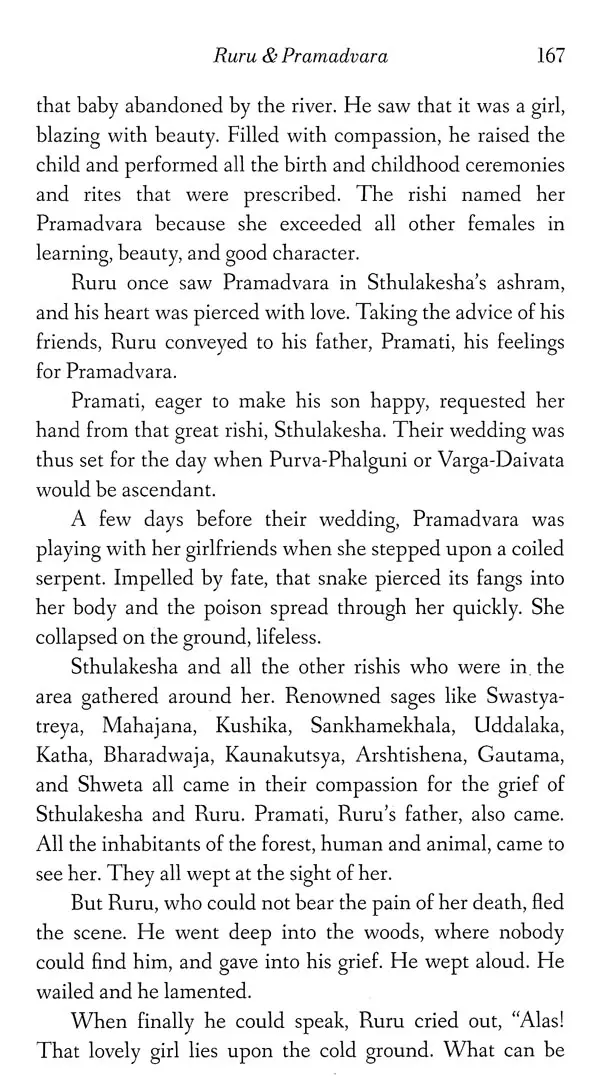
Hindu Love Stories: Dharmically Ever After
Book Specification
| Item Code: | UBD445 |
| Author: | Aditi Banerjee |
| Publisher: | Jitendra Anand Infratech Private Limited |
| Language: | English |
| Edition: | 2022 |
| ISBN: | 9789391317737 |
| Pages: | 263 |
| Cover: | PAPERBACK |
| Other Details | 8.00 X 5.00 inch |
| Weight | 210 gm |
Book Description
We think of love stories as those that end happily-ever-after. But thousands of years ago, in ancient India, love was understood in a different way - as one of the four aims of life, as a means for spiritual growth, as a celebration of the play of the Divine. As something profound, beautiful, and sometimes elusive The sacred texts of Hinduism are populated with astonishing stories of love between gods and goddesses, between mortals and celestial beings, between sages and saints and ordinary humans. Not just ancient lore, these iconic stories have come to define one of the oldest continuous living civilizations and cultures in the world.
This book takes more than 25 stories from the Itithaasa and Puranas, the epic literature of ancient India, as well as stories from history that exemplify the many different aspects and dimensions of love. These stories were transmitted over thousands of years until they became part of the memory of a people. These stories teach us how to find love, how to rise through love, and how to become better through love.
Aditi Banerjee's first novel, The Curse of Gandhari, a successful bestseller, was published by Bloomsbury India in September 2019. Her second novel on Shiva and Sati has been slated for publication in 2022 also by Blooms- bury India.
She is a practicing attorney at a Fortune 500 financial services company in the US and has also completed an Executive MBA at Columbia University. She earned a Juris Doctor from Yale Law School and received a B.A. in International Relations, magna cum laude, from Tufts University.
She is a prolific writer and speaker about Hinduism and the Hindu-American experience. She is a member of the Indic Academy and Indic Book Club, which sponsored a successful six-city book launch tour for The Curse of Gand- hari in September 2019 across India.
She co-edited the book, Invading the Sacred: An Analysis of Hinduism Studies in America in collaboration with Rajiv Malhotra, and has authored several essays in publications such as The Columbia Documentary History of Religion in America since 1945 and Buddhists, Hindus, and Sikhs in America: A Short History (Religion in American Life) (Oxford University Press). Her articles have also been published in Outlook India and many other publications.
In her free time, she enjoys wandering the Himalayas, cooking with the latest kitchen gadgets, hunting for that perfect cup of coffee, and reading about history and world literature.
'Hindu love stories' is perhaps an eyebrow-raising topic for a book. In fact, when I first started researching and writing this book, I felt a bit sheepish about the title and concept too. Shouldn't I write about something philosophical, some- thing scholarly and complex, like Vedanta, something aloof from mundane existence?
And the stories here are not what we conventionally think of as 'love stories' There are no simplistic fairy tales that end in happily-ever-after. Many of the stories are bitter- sweet or subsume the concept of love into larger discussions of metaphysical and philosophical notions. There is no fluff in these stories, no escapism, no naive promises delivered through rose-colored glasses. Quite the opposite, in fact.
And yet the fact that we do not conceive of such stories as 'love' stories only goes to show how conditioned we have become into thinking of 'love' in only one way-the modern popular culture depictions in romance novels and movies. We do not think of the story of Savitri as a love story, but what can be a higher expression of love than confronting Yama Deva, the God of Death and Justice, to seek her husband's life to be restored?
There are deeper issues at play too. We have been conditioned into a duality of thinking. Spirituality is some- thing distant and rarified; while, here and now, we deal with the practicalities of life, the desires and impulses that drive us, the travails and drama of family life. We have been conditioned to think that spirituality and love cannot co- exist, that they are in inherent conflict. As a result, our attempts at spirituality are tepid and weak; we put it off while we deal with the pesky human affairs that consume our immediate attention. It never occurs to us that we need the teachings of Dharma the most precisely when we are struggling with the trials and travails of samsara.
On top of that, centuries of colonization have burdened Hindus with a deep sense of prudishness and guilt when it comes to matters of the heart. This has resulted in deep- rooted misconceptions and misunderstanding of the traditional Hindu and Indic conceptions of love. This has made us unhealthy and dysfunctional in how we approach relationships and pursue what we consider to be 'love'.
Moreover, with the destruction of the traditional community and societal infrastructure that supported the transmission of Dharmic teachings and values-based education, there now exists a vacuum in which there is little to no Hindu or Dharmic discourse on matters related to family, love, and relationships (at least not in English). We have become alienated from the traditional knowledge and wisdom that helps us to healthily and harmoniously integrate our pursuit of love, with all of its attendant emotional and physical needs and desires, with Dharma and sadhana, or spiritual practice.
We have wrongly come to associate Dharma and spirituality exclusively with the path of renunciation and celibacy.
If we were all qualified and ready for the path of renunciation and celibacy; if we were prepared to turn to the path of nivrtti, withdrawal from the external world, that would be one thing. But the practical reality is that many of us, most of us, do still have a value for this world and all the joys and sorrows that come into play in this plane of existence. Love still matters to us.
Book's Contents and Sample Pages
